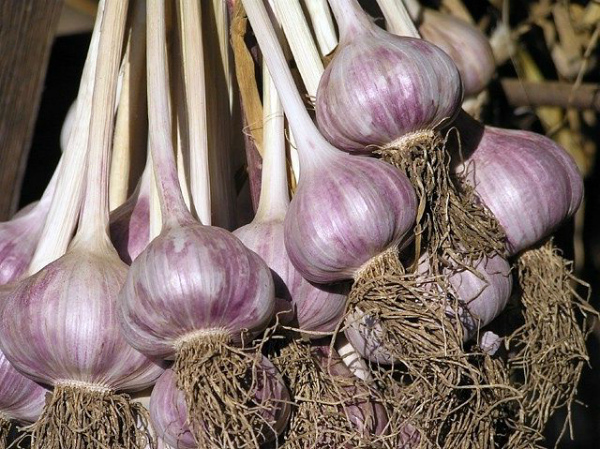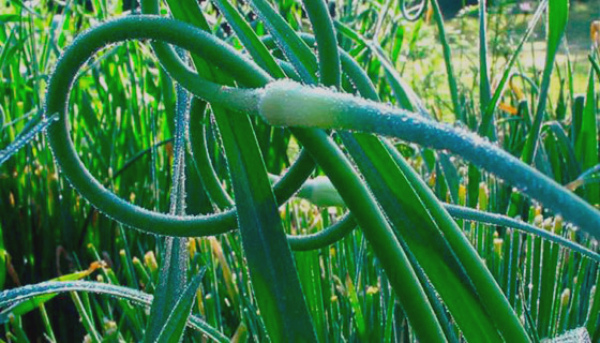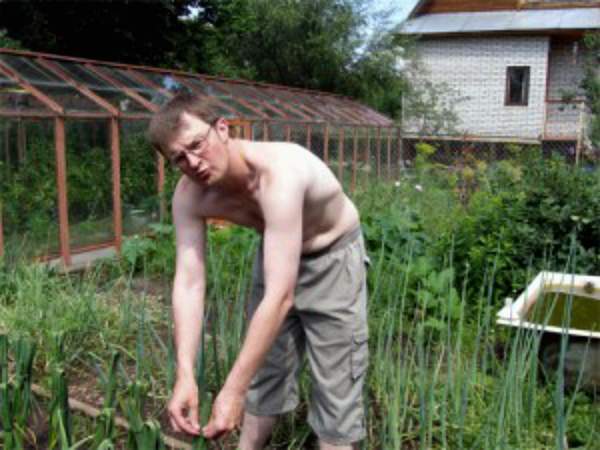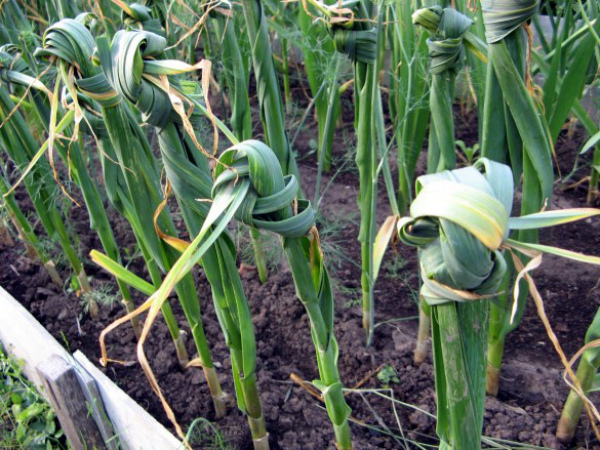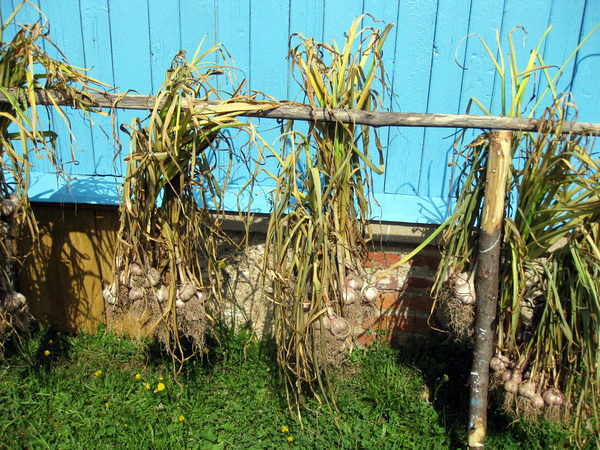When to tie summer garlic in knots and is it worth doing
Content
Why tie
Weaving a braid of garlic leaves, according to many gardeners, is necessary so that at the last stage of the growing season the plant gives off nutritious juices to the bulb, and does not continue to build up the green mass. When the structure of the leaves is disturbed, they gradually begin to turn yellow and die off, which means that access to them is lost. Since it is no longer necessary to provide the green part of the scythe, the plant concentrates all its attention on the bulb. This allows you to increase its size and weight, make the cloves healthier and suitable for further reproduction.
However, there is an opposite point of view, the supporters of which argue that it is not necessary to tie the leaves in a braid, since this does not affect the vegetation of the garlic. Moreover, an incorrectly performed procedure can harm the garlic and the yield will be less.
The only thing that both sides of the discussion agree on is “Braid vs. Weaving is pointless ”- you need to pick off the arrows of the garlic to stimulate it to ripen as soon as possible. If you are going to leave the bulbs for ripening, then leave one arrow, and break the rest.
When
Moving from theoretical debate about expediency to practice, it is important to know when to tether the leaves. This largely depends on the variety of garlic that you grow on your site. For most winter varieties, the ripening period occurs in July, that is, mid-summer. Dates may vary slightly depending on weather conditions in the current season. It is necessary to knit the green part of the bush 3-4 days before harvesting.
Be guided by the state of the leaves and arrows of the garlic, they will tell you the right time. Initially, the arrow that the plant releases is coiled into a spiral. The closer the ripening period of the bulb, the more the arrow straightens out. To avoid breaking the stem and subsequent rotting, it is necessary to cut off the arrow, and then tie the leaves into a braid. It is noteworthy that young arrows of garlic can be eaten by adding to a salad or pickling.
The timing largely depends on in what period of the year you planted cloves or bulbs. Seeds planted in spring can be cultivated in mid-August, as this is when the final stage of plant growth begins. Whereas planting for the winter requires earlier processing - around the beginning of July.
How to tie
The leaf braid should be tight enough not to fall apart in the first few minutes. Keep in mind that they are quite tough, so you will have to put in a lot of effort.
Wear gloves to protect your palms and fingers from cuts and garlic juice.
It is important to trim the arrowhead before weaving. Do this obliquely, leaving about 3 centimeters of the stem to the top leaf. You cannot pull out the arrow, as you can damage the bulb, and this will lead to its death.Use scissors and cover the cut with wood ash or lime to prevent infection in the plant. For example, a stem nematode will only be delighted with easy access to the interior of the plant.
When the procedure is over, tie one knot on the leaves if it is about 25-30 centimeters long, and two knots if it is more than 40 centimeters long. To do this, take two or three sheets next to each other, twist them together, being careful not to break them, and then make a knot.
You can also braid closely spaced leaves, the process is identical to braiding hair. You will need three sheets, which should be alternately interspersed, tightening each passage, the end of such a pigtail can be fastened with a knot.
When to dig
If you weave the garlic leaves, you can speed up the ripening of the bulbs, which means you can start digging a few days earlier. However, the individual characteristics of different varieties affect the duration of the ripening process. Therefore, rely on the knowledge gained after growing a particular variety or ask the manufacturer for information. Lack of information about the characteristics, duration of the growing season and the timing of ripening of different varieties of garlic very often interferes with gardeners.Usually, garlic cloves of different varieties coexist on the same bed, which is why the collection period is different for each one.
In practice, to determine the readiness of the bulb, gently scoop up the soil and inspect it. Scales, or husks, as you are accustomed to, should be dense, not damaged. The teeth should also be firm to the touch.
Test different bulbs from the garden a few weeks before the expected ripening date. First of all, this will help you not to overexpose the culture in the ground, because overripe bulbs lose a large amount of nutrients, it becomes much more difficult to store them. Moreover, the winter variety does not already differ in the duration of the shelf life.
In cases where visual inspection did not give you reliable information, you need to completely dig out the bulb and peel it. In a ripe bulb, the scales are easily separated from the cloves, and they themselves are dense and juicy.
The harvesting dates for winter bulbs are in mid-July. Traditionally, ripening is determined by yellowing leaf tips, straightened arrows and cracking bulbs. Moreover, the false stem becomes soft, and under the weight of the green part of the plant, the bush lies on the ground.
Don't just rely on dates or the lunar calendar when it comes to your landings. Yes, the harvest time for winter varieties is between July 15-20 and August 1, but for each plant it is different, so do not be lazy to check whether you should dig or it is better to wait a couple of days.
Dig in dry weather, early in the morning or late in the evening, so the bulbs do not get burned by direct sunlight. Both spring and winter types of crops do not tolerate overexposure in the ground and high temperatures, so try to do everything right, then it will be much easier to save the crop. Pry the bulbs out of the ground, clean them of adhering lumps of dirt and place them under the canopy to dry.
Video "Do I need to trim the garlic arrows and twirl the leaves"
In this video, we are talking about whether you need to trim the arrows, twirl the leaves so that the head is tied. Plus, you'll see how to get it right.

